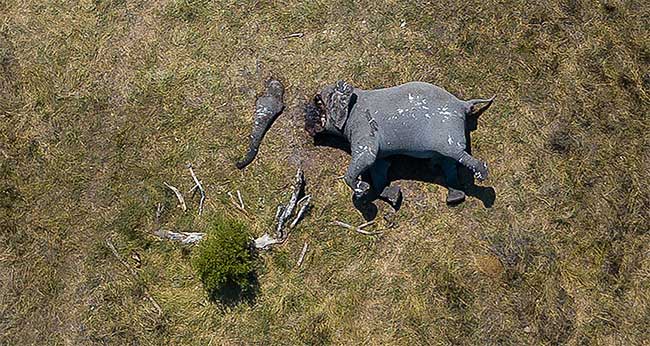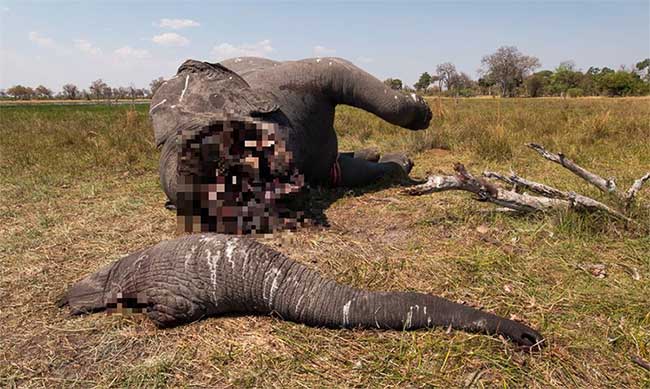The picture revealed the ruthlessness of rare animal poaching
Poaching is an act that has been banned in many countries around the world, as a last-ditch attempt to protect wild animals from extinction before human greed. But in fact, preventing poachers from getting out of hand is not always successful.
For example, recently a very frightening photo taken in North Botswana (Africa) has shown how failed we are in preventing rare poaching. It is the scene of the body of an African elephant being brutally slaughtered, to take away the head and the ivory - its most valuable items on the black market.
This photo photographer Justin Sullivan, is staying in Cape Town, South Africa. According to the report, poachers used a chainsaw to cut off the tap and remove ivory. The whole body was left there, in the middle of the savory savannah grass.

The corpses of an African elephant were ruthlessly slaughtered.
Sullivan said he was working on a film for a private company in Botswana, when suddenly the ranger said something about an elephant poaching.
"They said the elephant was attacked, and I immediately asked to go to the scene. When I arrived, I used a drone and got this painful picture," said the 28-year-old photographer.
"The photo is called" Disconnection "- Disconnection - and it shows the angle you can't tell when standing on the ground, thanks to the drone, the picture highlights the separation between the two parts of the elephant, and also to show how we were too indifferent to this story. "
Notably, Sullivan's photo appeared only a month after the ban on hunting in Botswana was removed.

The elephant was killed just one month after the hunting ban was lifted.
"I am glad that the picture is a lot of attention. Confused emotions have happened: anger, grief, mainly for the ban on hunting to be removed in Botswana. But on the other hand, this picture brings the message that we need to build a more sustainable elephant sanctuary, and solve the crisis that is currently happening with the ecosystem ".
Sullivan's photo brings a strong feeling, and is honored to participate in the Andrei Stenin International International Journalism Award. Contest results will be announced at the end of 2019.
In fact, even when the ban is still in place, ranger statistics show that the poaching of elephants in Botswana is not much better. Particularly in the period of 2017 - 2018, about 400 elephants were killed. And if calculated in the period 2014-2018, the number of poached elephants increased to 593%.
According to new research published in Current Biology, pressure on conservation in Botswana will increase after lifting the ban."The evidence that ivory poaching took place on a scale of hundreds of children each year from before 2017. And now the ban has been lifted." - extract the research report.
- Kenya employs 1,000 rangers to combat elephant poaching
- Internet threatens rare animals
- Three rare elephants were killed in Indonesia
- Inject poison into rhino horn to prevent poaching
- The picture has 'ghost': Suddenly an extra person appears thanks to a cut
- Pangasius faces an increasing risk of extinction
- South Africa combats rhino poaching with chips and DNA
- Extremely rare wolf moon appears all over the world
- Chinese wild tiger may disappear
- Rare picture of babies born in amniotic sac
- Indian rhinos are killed at breakneck speed
- Strange creatures are like sushi pieces, but don't touch ...
 Animal 'suffering' after hibernation
Animal 'suffering' after hibernation Why do goats climb well?
Why do goats climb well? Scientists were surprised to see chimpanzees eating turtles
Scientists were surprised to see chimpanzees eating turtles Giant catfish died deadly due to drought in Thailand
Giant catfish died deadly due to drought in Thailand